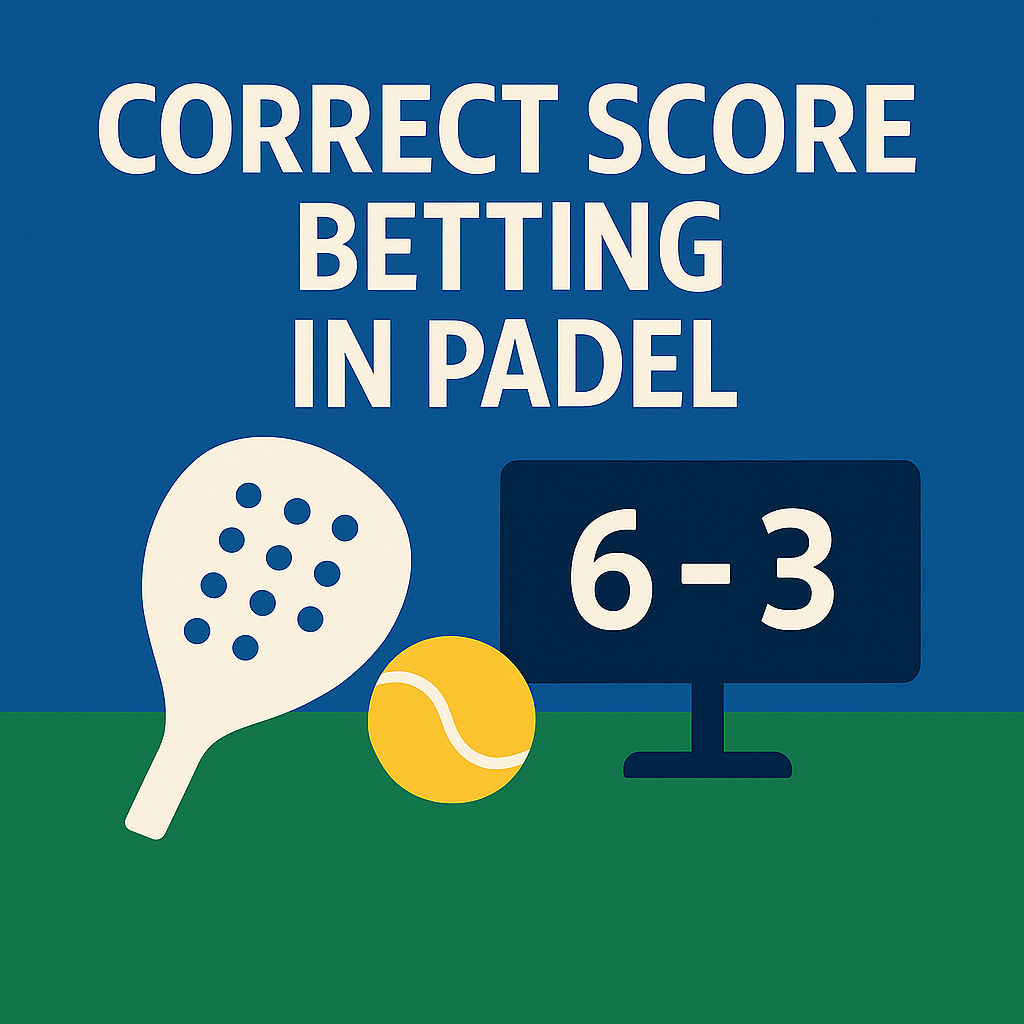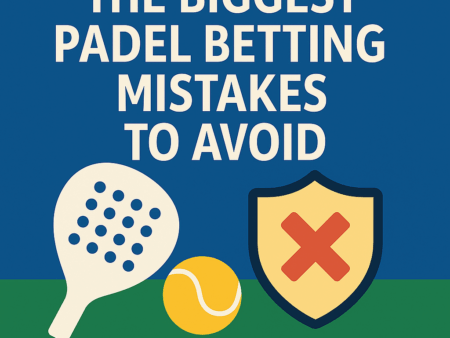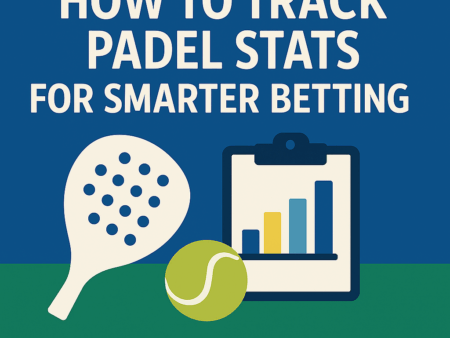
Correct score betting is one of the most precise — and highest‑value — markets in padel. Instead of predicting who wins, you predict the exact final score, such as:
- 2–0 (straight sets)
- 2–1 (three‑set match)
This guide explains how correct score bets work, when they offer value, and the real patterns that influence scorelines in professional padel.
🟦 What Is Correct Score Betting?
You predict the exact outcome of the match:
- 2–0 to Team A
- 2–1 to Team A
- 2–0 to Team B
- 2–1 to Team B
Because predicting the precise score is harder, odds are significantly higher than match-winner markets.
Correct score betting rewards deep analysis of form, styles, and conditions.
🟩 Why Correct Score Betting Matters in Padel
Correct scores follow predictable patterns because padel features:
- Frequent momentum shifts
- Heavy influence from playing styles
- Clear differences between dominant vs defensive pairs
- Set‑level patterns (fast starts, late fades, etc.)
By understanding these patterns, bettors can consistently find value.
🟨 The Four Correct Score Options
1. Team A wins 2–0
2. Team A wins 2–1
3. Team B wins 2–0
4. Team B wins 2–1
Each outcome has different indicators and value opportunities.
🟧 When to Bet 2–0
A straight‑sets victory is likely when:
- One pair is clearly stronger in every area
- The underdog struggles outdoors or indoors (depending on the court)
- The favourite’s playing style counters the opponent perfectly
- The stronger pair wins first sets consistently
- The underdog has high unforced‑error rates
Classic scorelines:
- 6–3, 6–4
- 6–2, 6–3
Best spots for 2–0:
- Dominant indoor smash-heavy teams on fast courts
- Defensive specialists outdoors when wind harms the rivals
🟫 When to Bet 2–1
Three‑set matches happen in these scenarios:
- Pairs are close in ranking or form
- One pair starts quickly but fades physically
- Outdoor matches with changing wind conditions
- High-pressure matches (semifinals, finals)
- Strong teams who often drop one set before adjusting tactically
Indicators a match will go 3 sets:
- Long first set (7–5 or 7–6)
- Both teams holding serve consistently
- Tight tiebreaks
- Heavy defensive play and long rallies
🟥 When to Bet Underdog Correct Scores
Underdog correct score bets offer big odds, but look for very specific situations:
1. Stylistic advantage
Example: an elite defensive team outdoors facing a smash-heavy favourite.
2. Fatigue on the favourite
Long matches earlier in the event or visible physical decline.
3. Partner instability
New pairings often underperform.
4. Home crowd advantage
In some tournaments, crowd energy shifts momentum heavily.
Underdog 2–1 results are more realistic than underdog 2–0.
🟦 How Conditions Influence Correct Scores
Indoor
- Faster play
- More winners
- More predictable outcomes
- Higher chance of 2–0 if favourite is strong
Outdoor
- Wind increases errors
- More breaks of serve
- Higher chance of 2–1 results
Weather is a major hidden factor bookmakers often underprice.
🟩 Live Correct Score Betting (Huge Value)
Live correct score markets can be extremely profitable.
Best moments to bet live:
- After the favourite loses the first set (comeback 2–1)
- When a team blows multiple break points
- When weather suddenly shifts
- When a dominant team starts slowly but improves mid‑set
Bookmakers tend to overreact to early scorelines.
🟨 Scoreline Patterns to Look For
Patterns indicating 2–0:
- One pair dominating the net
- Opponent struggling with smashes or walls
- Strong serving + weak returning from the opponent
Patterns indicating 2–1:
- Long rallies
- Frequent deuce games
- Alternating breaks of serve
- Opponents with contrasting playing styles
🟧 Common Mistakes
Avoid these errors:
- Picking 2–1 just for high odds
- Ignoring indoor/outdoor impact
- Assuming favourites always win 2–0
- Betting 2–0 when form is inconsistent
- Forgetting head‑to‑head history
Correct score betting demands logic, not hope.
🟫 Summary
Correct score betting rewards bettors who understand:
- Playing styles
- Form trends
- Set‑level patterns
- Conditions
- Momentum signals
Use 2–0 when matches are predictable and one-sided. Use 2–1 when matches are close, conditions change, or momentum swings often.
This page prepares you for the upcoming guides on outrights, safe betting, odds comparison, and advanced statistical analysis.


